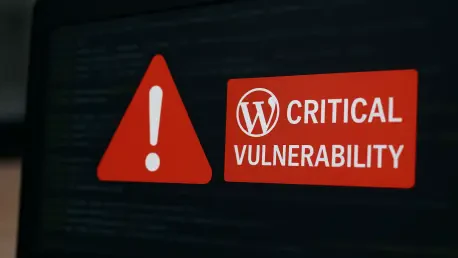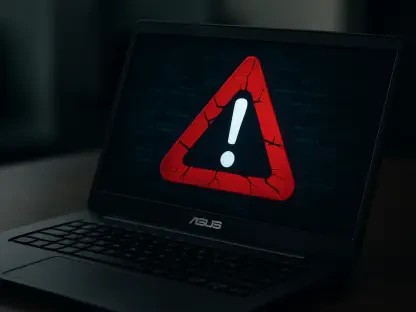Introduction
A staggering number of over 400,000 WordPress websites are currently at risk due to a severe security vulnerability in a widely used plugin, exposing them to potential full site takeovers by malicious actors. This critical flaw, found in the Post SMTP plugin, underscores the persistent dangers lurking within the vast ecosystem of WordPress, a platform that powers millions of sites globally. The urgency of this issue cannot be overstated, as attackers are already exploiting the vulnerability, putting countless site owners and their visitors in jeopardy.
This FAQ aims to address the most pressing questions surrounding this security threat, offering clear guidance and actionable insights for affected users. Readers can expect to learn about the nature of the flaw, the risks it poses, steps to mitigate danger, and the broader implications for WordPress security. By delving into these key areas, the goal is to equip site administrators with the knowledge needed to protect their digital assets.
The scope of this discussion spans from technical details of the vulnerability to practical advice on safeguarding sites. Each section focuses on a specific aspect of the issue, ensuring a comprehensive understanding of both immediate concerns and long-term considerations. Through this structured exploration, clarity will be provided on how to navigate this critical situation effectively.
Key Questions or Key Topics
What Is the Post SMTP Vulnerability Affecting WordPress Sites?
The Post SMTP plugin, designed to improve email functionality by replacing the default PHP mail system with an SMTP mailer, has been found to harbor a critical security flaw identified as CVE-2025-11833. This vulnerability stems from a lack of proper access controls in the plugin’s code, specifically within the PostmanEmailLogs class constructor. Its importance lies in the sheer scale of potential impact, given that over 400,000 sites have installed this tool, making it a prime target for cybercriminals.
This flaw allows unauthenticated attackers to access sensitive data, such as password reset emails, which can then be exploited to reset administrator credentials. Once access is gained, attackers can take full control of a site, altering content, installing malicious backdoors, or redirecting users to harmful locations. The severity of this issue is reflected in its CVSS score of 9.8, marking it as a critical threat that demands immediate attention.
Evidence of the danger is already apparent, with security measures blocking over 4,500 attack attempts since early November. Researchers warn that this number is likely to grow, emphasizing the need for swift action among users. Understanding the technical root of this vulnerability is the first step toward mitigating its risks and protecting valuable online platforms.
How Was the Vulnerability Discovered and Addressed?
The critical flaw in Post SMTP came to light on October 11 through a bug bounty program run by Wordfence, a prominent security provider in the WordPress community. A user named “netranger” reported the issue, earning a substantial reward of $7,800 for their contribution to identifying this significant threat. This discovery process highlights the value of community-driven efforts in uncovering hidden dangers within widely used software.
Following the report, the development team behind Post SMTP was promptly notified, and a patched version, 3.6.1, was released by October 29 to resolve the issue. This rapid response demonstrates the importance of collaboration between security researchers and developers in addressing vulnerabilities before they can be widely exploited. However, the effectiveness of this fix depends on users updating their installations without delay.
Wordfence has also taken proactive steps by implementing a firewall rule to block exploits of this flaw for their Premium, Care, and Response users, with free users gaining access to the same protection on November 14. This staggered rollout showcases a strategic approach to safeguarding a broad user base. Staying informed about such updates and patches is crucial for maintaining site security in the face of evolving threats.
What Are the Risks of Not Updating Post SMTP Immediately?
Failing to update the Post SMTP plugin to the latest version poses severe consequences for WordPress site owners, as the vulnerability enables attackers to gain unauthorized access with relative ease. Once inside, malicious actors can manipulate site content, steal sensitive data, or use the platform to distribute malware, thereby harming both the site’s reputation and its visitors’ safety. The scale of potential damage is immense, given the number of affected installations.
Beyond individual site compromises, there is a broader risk of attackers leveraging these takeovers to launch coordinated campaigns against other targets. For instance, compromised sites could be used to redirect traffic to phishing pages or serve as launchpads for further attacks across the web. This cascading effect amplifies the threat, making timely updates not just a personal priority but a collective responsibility.
Security reports indicate that attack attempts are already on the rise, with expectations of even larger waves of exploitation in the coming days. This trend serves as a stark reminder that procrastination in applying updates can leave sites vulnerable during critical windows of opportunity for attackers. Acting promptly is the most effective defense against such imminent dangers.
Why Are WordPress Plugins Frequent Targets for Cybercriminals?
WordPress plugins, like Post SMTP, are often targeted by cybercriminals due to the platform’s massive user base and the extensive attack surface it presents. With millions of websites relying on plugins to extend functionality, a single flaw in a popular tool can open the door to widespread exploitation, offering attackers a high return on their efforts. This dynamic makes the ecosystem a constant focus for malicious activity.
The diversity and sheer volume of plugins available also contribute to their vulnerability, as not all developers prioritize robust security practices during creation. Smaller teams or individual developers may overlook critical checks, such as capability controls, inadvertently leaving gaps that attackers can exploit. This incident with Post SMTP exemplifies how even well-intentioned tools can become liabilities if security is not baked into the design.
Moreover, the potential for full site takeovers, as seen with this flaw, provides attackers with a powerful platform for further nefarious activities, from data theft to malware propagation. This attractiveness ensures that plugins will remain prime targets, underscoring the need for ongoing vigilance and rigorous vetting of third-party tools by site administrators. Awareness of these patterns is essential for anticipating and countering threats effectively.
What Protective Measures Can WordPress Users Take?
To safeguard sites against the Post SMTP vulnerability and similar threats, the most immediate action is to update the plugin to version 3.6.1 or later, where the flaw has been addressed. This simple step closes the specific gap exploited by attackers, significantly reducing the risk of unauthorized access. Ensuring that all plugins and core WordPress software are up to date is a fundamental practice for maintaining security.
Beyond updates, employing additional security tools, such as firewalls or monitoring services offered by providers like Wordfence, can add layers of defense against exploits. These solutions can detect and block malicious attempts before they succeed, providing peace of mind for site owners. For those unable to update immediately, temporarily disabling the affected plugin until a patch can be applied is a viable interim measure.
Lastly, adopting a proactive stance on security involves regular audits of installed plugins, prioritizing those from reputable sources with strong track records for maintenance and support. Educating oneself on best practices, such as using strong passwords and limiting user permissions, further fortifies a site against potential breaches. Combining these strategies creates a robust shield against the evolving landscape of cyber threats.
Summary or Recap
This FAQ distills the critical aspects of the Post SMTP vulnerability affecting over 400,000 WordPress sites, providing clarity on its nature and impact. Key points include the flaw’s ability to enable unauthenticated site takeovers through access to sensitive email data, the rapid response with a patched version 3.6.1, and the ongoing rise in attack attempts that demand immediate user action. Each question addressed offers a unique perspective on navigating this urgent security challenge.
The main takeaways emphasize the importance of timely updates as the primary defense against exploitation, alongside the broader vulnerability of WordPress plugins due to their widespread use and varying security standards. Protective measures, such as leveraging security tools and adopting best practices, are essential for mitigating risks. These insights highlight the shared responsibility of site owners to stay vigilant in a threat-laden digital environment.
For those seeking deeper exploration, resources on WordPress security blogs or documentation from trusted providers can offer further guidance on safeguarding sites. Understanding the intricacies of plugin management and staying informed about emerging threats remain critical for maintaining a secure online presence. This summary encapsulates the urgency and actionable steps needed to address the current crisis effectively.
Conclusion or Final Thoughts
Reflecting on the severity of the Post SMTP vulnerability, it becomes evident that swift action is indispensable in curbing the potential fallout for hundreds of thousands of WordPress sites. The incident serves as a stark reminder of the ever-present risks within digital ecosystems and the critical role of community collaboration in identifying and resolving such threats. Looking back, the rapid patch release and protective measures rolled out by security providers offered a lifeline to many.
Moving forward, site administrators should prioritize establishing routine update schedules and integrating advanced security solutions to preempt similar vulnerabilities. Exploring partnerships with trusted security services or investing in premium protection plans could provide an added buffer against exploitation during those critical early days. These proactive steps will ensure resilience against future threats.
Ultimately, this event prompts a reevaluation of how plugin security is approached, encouraging a mindset of continuous improvement and preparedness. Site owners are urged to assess their current setups, identifying potential weak points and addressing them before attackers can strike. This ongoing commitment to vigilance and adaptation marks the path toward a safer digital landscape for all.









